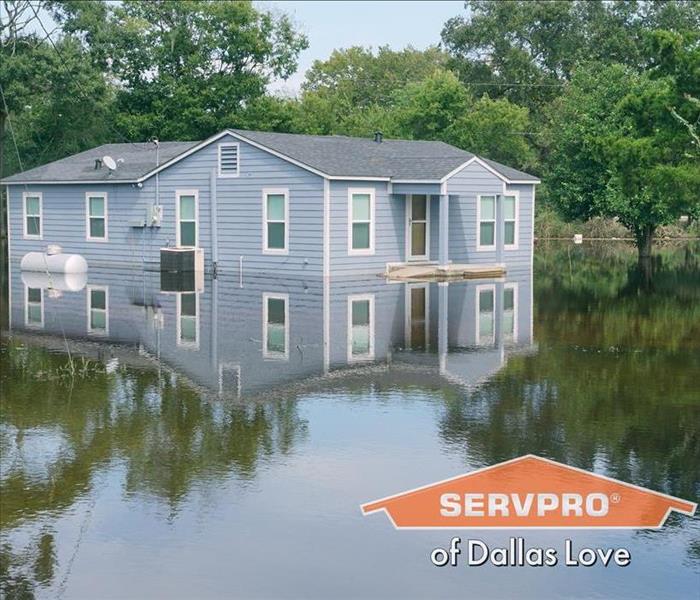Why You Need to Test Concrete after Water Damage
3/15/2022 (Permalink)
 Testing concrete after a flood or significant water damage is vital. In some cases, the damage water causes to concrete is more than just superficial.
Testing concrete after a flood or significant water damage is vital. In some cases, the damage water causes to concrete is more than just superficial.
Currently, most buildings are constructed using concrete with a coating and moisture barrier to protect them. However, testing concrete after a flood or significant water damage is vital. In some cases, the damage water causes to concrete is more than just superficial. Therefore, specialized testing is required to ensure appropriate water damage restoration steps are taken to prevent long-lasting damage.
Observable Signs of Moisture Damage in Concrete
The earlier problems are identified, the easier it is to avoid serious structural damage. Some of the obvious signs of water damage in concrete include:
- Discoloration or damp spots on the floor
- Loose or damaged flooring materials
- Deterioration and crumbling of concrete
- Mold and mildew growth on the concrete and flooring materials
- Peeling, bubbling, or cracking of the floor surface
- Moldy odor with white or black floor patches
Reason for Water Damage in Concrete
Calling experts with experience in water damage restoration is vital after a flood or severe water event. However, there can be other reasons why moisture damage occurs in concrete. Some of the sources of moisture include the following:
- Concrete improperly drying
- Water seeping in from the ground
- Faulty vapor barrier
- Inadequate landscaping grade
- Poor ventilation
- High relative humidity
- Human-made causes like water leaks caused by broken plumbing pipes
Four Moisture Tests for Concrete Floors
A high moisture-to-cement ratio affects concrete compaction and reduces concrete’s compressive strength and durability.
Here are four standard tests to check:
ASTM D4263
This is the most economical method to test for moisture content in concrete. An 18-inch square plastic sheet is tapped to the concrete surface. If after 16 hours a visible condensation on tape appears, the moisture is excessive.
ASTM F1869
The Calcium Chloride (CaCI) test is a surface moisture test used to indicate the presence of moisture, quantity, and rate of moisture vapor in the concrete after 60 – 72 hours. The drawback with this kit is that it only measures moisture content in the top three-quarter of an inch in the concrete; anything below is undetectable.
ASTM F2170
This is an advanced technology where special moisture probes are embedded in the concrete. Unlike the other methods, this test determines the moisture levels throughout the slab’s depth.
ASTM F2659
This is a non-destructive electronic moisture meter used to detect moisture levels on a concrete surface. You can also use this testing method to locate high moisture areas within the concrete slab.
Mitigation Measures to Prevent Water Damage in Concrete
One of the most crucial steps after any type of water damage is to dry the concrete flooring thoroughly. Water can permeate the concrete surface because it’s a porous material. Therefore, just wiping the surface dry is rarely enough.
SERVPRO’s Dallas Water damage restoration professionals use specialized equipment to dehumidify rooms and control temperature to speed up drying times.
Has your home or commercial building been damaged by water? If so, talk to a SERVPRO of Dallas Love specialist today to learn how we can ensure that your concrete structures don’t suffer from the long-term effects of water damage.
Call us at (214) 272-7600 for 24-hour assistance.





 24/7 Emergency Service
24/7 Emergency Service